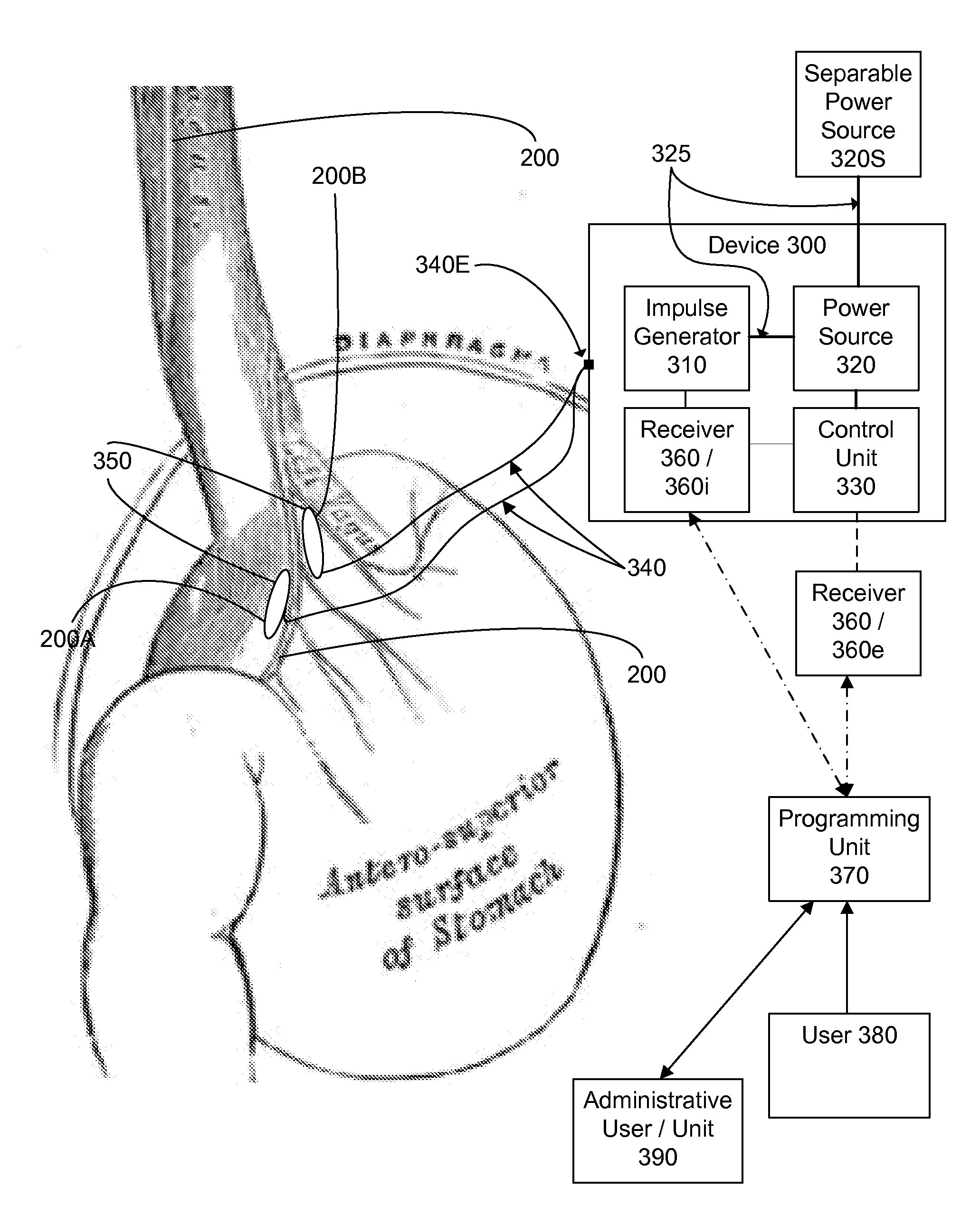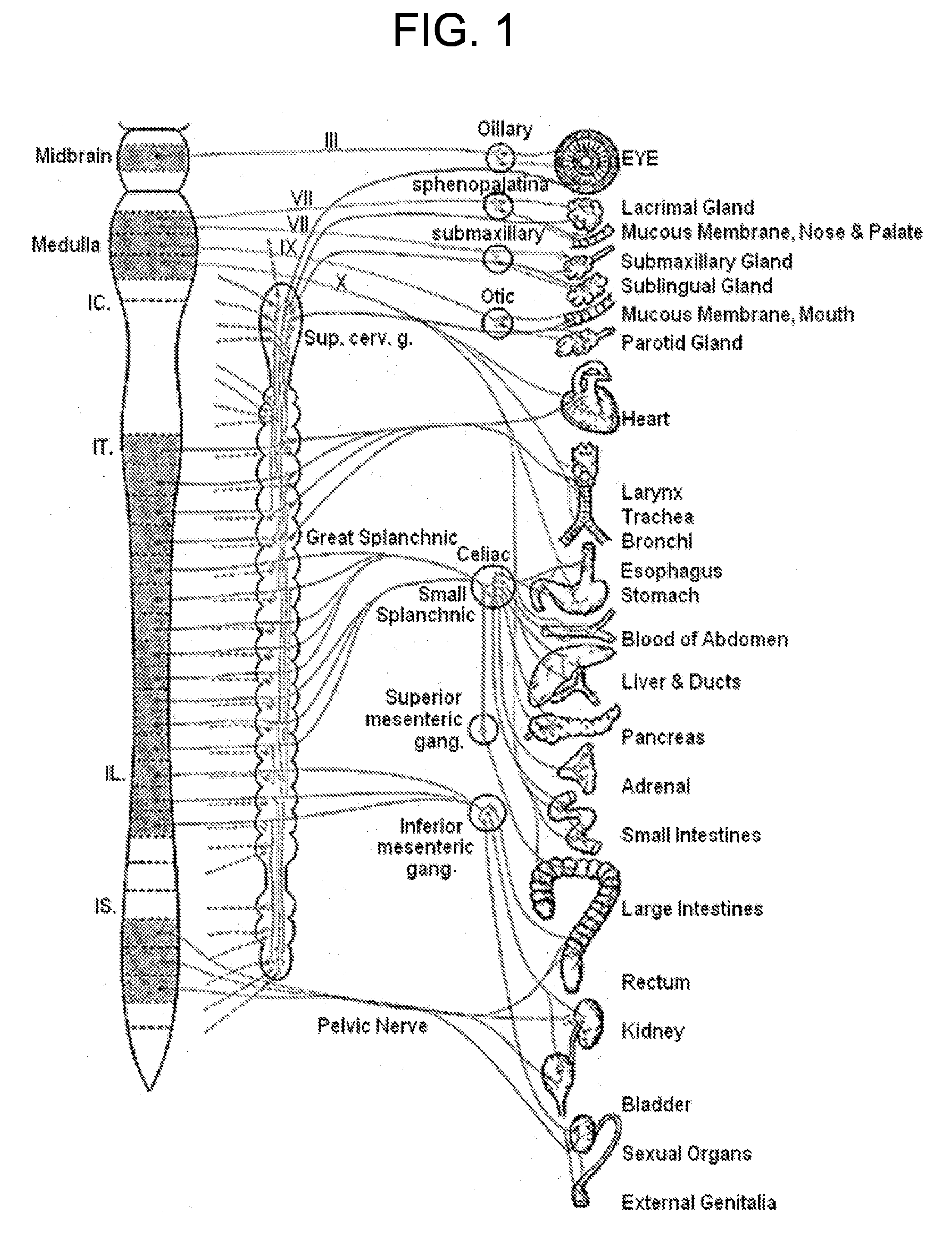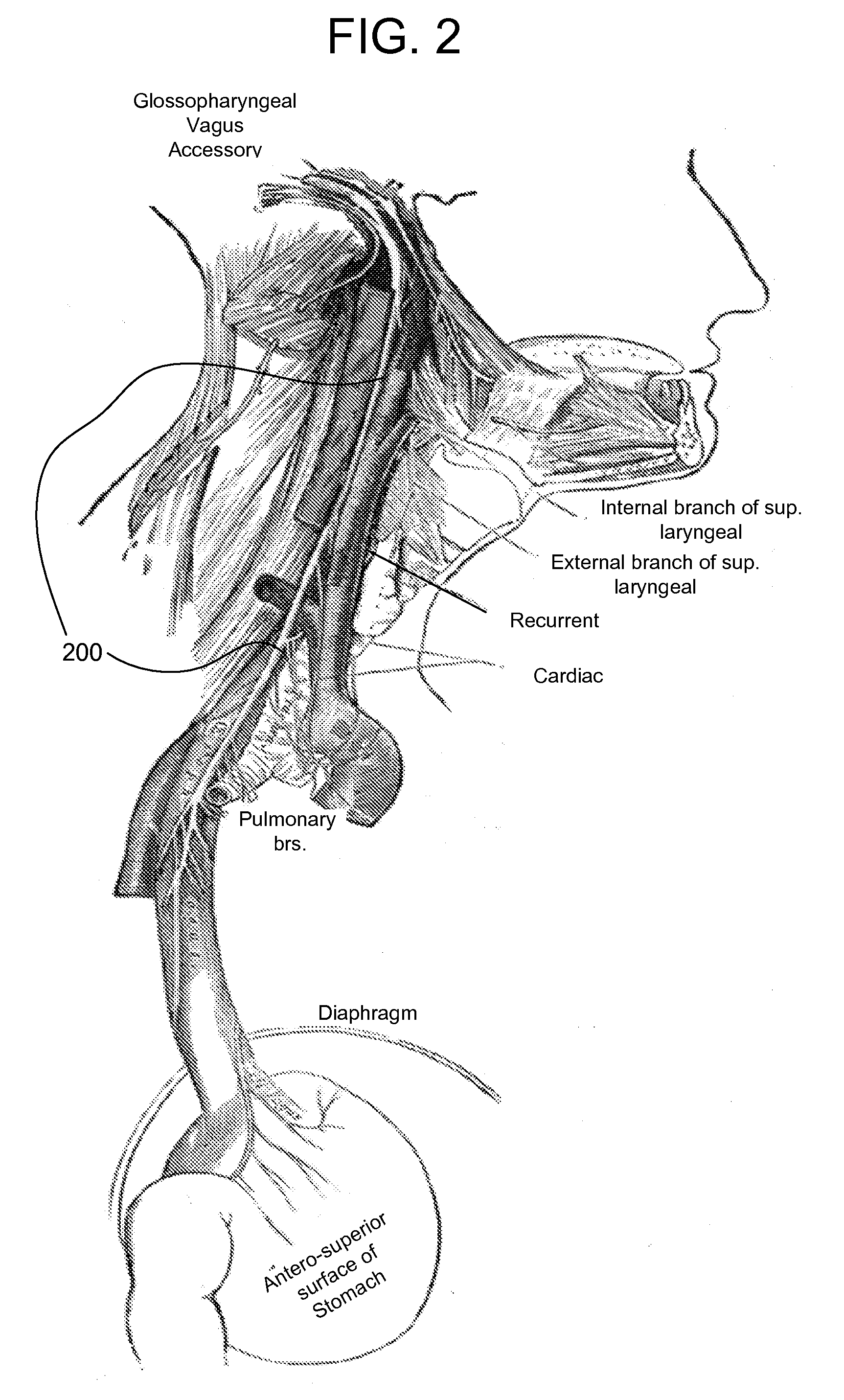Methods and apparatus for the treatment of eating disorders using electrical impulse intervention
- Summary
- Abstract
- Description
- Claims
- Application Information
AI Technical Summary
Benefits of technology
Problems solved by technology
Method used
Image
Examples
Embodiment Construction
[0053]For the purposes of illustration, forms are shown in the drawings that are preferred, it being understood that the invention is not limited to precise arrangements or instrumentalities shown.
[0054]Referring to FIG. 1, a diagrammatic view of the sympathetic and parasympathetic nerve systems is shown. Interestingly, it has been observed in the literature that the nervous system maintains a balance of the signals carried by the sympathetic and parasympathetic nerves. From the sympathetic nerves, the stomach is innervated by the celiac plexus (shown coming from the left). From the parasympathetic nerves (III, VII, VIII, IX, X and Pelvic shown here), the vagus nerve (i.e., X) is shown extending down to the stomach, in addition to the heart, larynx, trachea, bronchi, esophagus, blood of the abdomen, liver & ducts, pancreas, small intestines, and large intestines.
[0055]Referring to FIG. 2, a cross-sectional anatomical illustration of selected portions of a neck, thoracic and abdomina...
PUM
 Login to View More
Login to View More Abstract
Description
Claims
Application Information
 Login to View More
Login to View More - R&D
- Intellectual Property
- Life Sciences
- Materials
- Tech Scout
- Unparalleled Data Quality
- Higher Quality Content
- 60% Fewer Hallucinations
Browse by: Latest US Patents, China's latest patents, Technical Efficacy Thesaurus, Application Domain, Technology Topic, Popular Technical Reports.
© 2025 PatSnap. All rights reserved.Legal|Privacy policy|Modern Slavery Act Transparency Statement|Sitemap|About US| Contact US: help@patsnap.com



